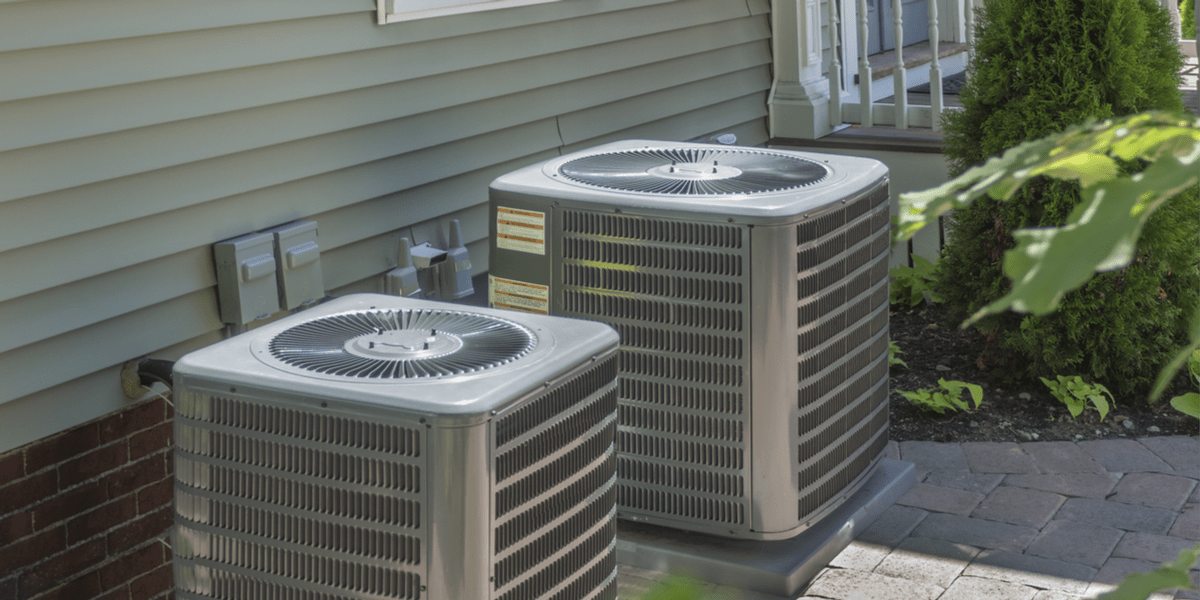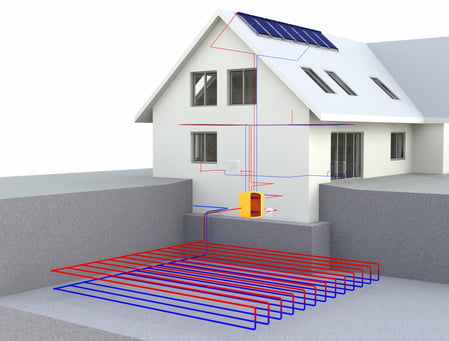Types of Electric Heat Pumps and Their Advantages

Before designing the space heating and domestic hot water systems of a building, a key step is to determine the energy source to run these appliances. Natural gas or fuel oil combustion comes with a lower operating cost than electric resistance heating, but these fuels produce emissions and require an exhaust system. On the other hand, electric heaters have the potential to be emissions-free if they run with solar or wind power.
Resistance heaters are the most common configuration that runs with electricity, but their operating cost can be extremely high considering the electric tariffs in NYC. However, electric heat pumps can normally deliver from 2 to 4 units of heat per unit of electricity consumed, offering a much lower running cost than an equivalent resistance heater. For a given amount of energy delivered, electricity is much more expensive than gas in NYC, but electric heat pumps can match the running cost of gas boilers by using the energy input more efficiently.
This article will provide an overview of the two main electric heat pump configurations: air-source and geothermal systems.
Air-Source Heat Pumps
As implied by their name, air-source heat pumps extract energy from the surrounding air to deliver heat. This is exactly like an air conditioner running in reverse: have you noticed how the outdoor unit makes the air around it warm? Well, a heat pump uses this same effect indoors.
Assuming the same heating capacity, an air-source heat pump with an ENERGY STAR label only draws around 40% of the power required by an electric resistance heater. Their efficiency is indicated by the Heating Seasonal Performance Factor (HSPF), which is a ratio of Btu output to watt-hour input, similar to the gas mileage value of a car. Look for the highest HSPF value that fits your budget to maximize energy savings.
Just like air-conditioning systems, air-source heat pumps are available as packaged systems or split systems (ductless). If your property already has ductwork, a packaged heat pump may be best choice. On the other hand, if duct installation is impractical, a ductless system is recommended. ENERGY STAR air-source heat pumps have a minimum HSPF of 8.2 in packaged configuration, and 8.5 in ductless configuration.
Reverse-cycle chillers are a subtype of air-source heat pump that delivers heat to a water reservoir, instead of supplying it directly to indoor air. This setup allows the heat pump to be used with radiant floor heating piping or with fan-coils.
Geothermal Heat Pumps
The temperature of outdoor air varies considerably throughout the year, and air-source heat pumps suffer from reduced efficiency during the coldest days of winter. The ground is much more reliable as source of heat; this system configuration extracts heat directly from the ground, from groundwater, or from a nearby body of water such as a pond or lake. Geothermal heat pump systems are often called water-source heat pumps, since most system configurations use water with antifreeze as a heat exchange medium between the heat pump and the ground.

Geothermal heat pumps offer a higher efficiency than air-source heat pumps. High-efficiency models in the market deliver savings of over 70% compared with electric resistance heaters, and the most efficient geothermal heat pumps in the market save over 80%.
Geothermal heat pumps can be further classified into closed-loop and open-loop systems.
- Closed-loop systems have a closed piping loop that circulates between the heat pump and the ground, but the water inside never mixes with groundwater.
- Open-loop systems draw groundwater from a well, circulate it through the heat pump, and then discharge it. Given their operating procedure, open-loop systems are subject to any applicable groundwater discharge regulations.
Closed-loop systems can used either vertical or horizontal water loops, depending on the availability of land. Horizontal loops require trenches at least four feet deep, and are suitable in properties with ample land area. On the other hand, vertical loops can go hundreds of feet underground, and are typically used when land is limited - high-rise construction in NYC is an example. If the property is close to a body of water such as a pond or lake, the underground water loop can be submerged instead, which results in a much cheaper installation.
Recommendations to Use Heat Pumps Effectively
If you are considering heat pumps for your building, the best option changes depending on project conditions. Geothermal heat pumps are the most efficient but also the most difficult to install, especially if we’re dealing with a vertical closed-loop system in a high-rise building. Also consider that geothermal heat pumps require a prior assessment of the ground below your property - the project may be unfeasible if the presence of rocks hinders excavation.
Consider a reverse-cycle chiller (RCC) if your installation already uses hydronic piping, or a packaged unit if you already have air ducts. Ductless heat pumps can be a great option in apartment buildings where each dwelling has individual heating and cooling systems. In new constructions, consider a geothermal heat pump, since it is much easier to install the underground water loop when there is no building yet.

Michael Tobias
Michael Tobias, the Founding Principal of NY Engineers, currently leads a team of 50+ MEP/FP engineers and has led over 1,000 projects in the US
Join 15,000+ Fellow Architects and Contractors
Get expert engineering tips straight to your inbox. Subscribe to the NY Engineers Blog below.


